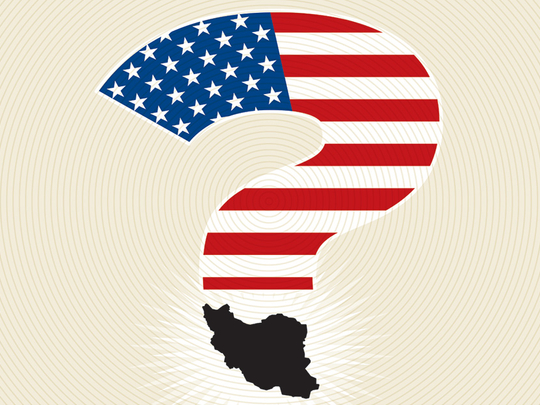
As a result of the White House’s historic policy shift to reestablish diplomatic ties with Cuba, speculations have emerged regarding the possibility of a similar thaw in relations between American and Iran. Such conjecture has been triggered by the similarities between the two relationships. Many analysts believe, for example, that anti-Americanism is a central ideological pillar of both Iran’s and Cuba’s regimes. For decades, Washington has severed diplomatic relations with both countries and imposed stringent sanctions on each.
One theory asserts that Iran maintains an “enemy narrative” towards the US as a domestic and international foreign policy strategy. This approach is said to benefit Iran’s domestic standing by enabling it to suppress dissent and solidify its hold on power. Regionally, these analysts argue, the Iranian Nizam (political system) has tied its influence to opposition to the US. But, even putting President Hassan Rouhani aside, this theory is incapable of explaining Iran’s behaviour towards the US throughout the past 25 years. Iran has made calculated overtures to America under three of its other presidents, all under Ayatollah Ali Khamenei’s leadership.
During his presidency (1989-1997), Hashemi Rafsanjani signed a $1 billion (Dh3.67 billion) deal favouring the American oil company Conoco. The deal aimed to bring the extremely hostile situation between the two nations, which had developed during the Iraq-Iran war, to an end. During the war, the US went to great lengths in supporting Iraq. According to CIA files, the US helped orchestrate Saddam Hussain’s chemical weapons attacks against Iran. Rafsanjani’s move prompted Washington to impose one of the toughest oil sanctions to date then.
Under the presidency of Mohammad Khatami (1997-2005), Iran cooperated with the US and played a key role in toppling the Taliban and establishing Hamid Karzai’s government in Afghanistan, which was the US preference. Only a few weeks later, however, president George W. Bush branded Iran as part of the “axis of evil”, alongside Iraq and North Korea.
In yet another glaring example, Iran offered the US “a grand bargain deal” in 2003 to bring all their disputes to an end. That deal was rejected by the Bush administration.
Even the hardliner Mahmoud Ahmadinejad made efforts at rapprochement. When he congratulated Barack Obama on his 2008 election success — unprecedented since the establishment of the Islamic Republic — he stunned many observers. In addition, under Ahmadinejad, Iran made several secret overtures to the US. Such instances prove that the “enemy narrative” theory does not match the realities on the ground. But does this mean, as some analysts argue, that a peaceful resolution to the Iran nuclear issue could be used as a springboard for the formation of a normalisation process and ultimate reconciliation?
The reality is that, given the Iranian Nizam’s foremost concern for security, Tehran seeks less hostile relations with the US. Iran, however, rejects normal relations for a number of reasons.
First of all, the Iranian leadership has repeatedly expressed deep mistrust for restoring normal diplomatic relations with the US. The country’s misgivings are rooted in two factors. First, as the Iranian sociologist Ahmad Ashraf maintains, “since the beginning of the 20th century, Persians from all walks of life and all ideological orientations have relied on conspiracy theories as a basic mode of understanding politics and history”. The great powers’ covert interventions in the country’s affairs were responsible for the formation of this worldview. Second, mistrust of America has resulted from specific historical experiences, most notably the US embassy’s involvement in the 1953 coup and the documents that were procured after the 1979 embassy seizure in Tehran. According to those documents, the US embassy had been involved in espionage and the expansion of its covert links with members of Iran’s new government and army.
Ayatollah Khamenei contends that “any relations [with the US] would provide the possibility to the Americans to infiltrate Iran and would pave the way for their intelligence and spy agents”.
Another less-noted factor in the normalisation of relations between Iran and the US is the issue of “cultural invasion” or tahajome farhangi, as Khamenei puts it. Among the Iranian power elite, there is a broadly shared perception of deliberate cultural invasion by the US via numerous Farsi television stations based primarily in America. These are said to be promoting liberal values among the Iranian youth to erode their religious beliefs and ultimately undermine the influence of Iran’s religion-based political system.
According to Joseph Nye, the American political thinker who developed the concept of soft power, American culture is one of the pillars of the US power structure and instrumental in the projection of that power. The Iranian leadership fears that normal relations will result in the expansion of trade and commerce and thus, suddenly, increase the number of Iranians visiting the US and vice versa. The outcome of such exchanges could result in the acceleration of the westernisation process in the country and threaten the system’s ideological foundations.
Apart from the Iranian leadership’s views on normalisation, there are other issues that cause hesitation.
Export of the revolution is at the heart of Iran’s foreign policy, even though the government emphasises that the strategy is based on word and not the sword. In the 2013 Farsi book Mr Ambassador, in a long interview, Iranian Foreign Minister Javad Zarif asserts: “We have a fundamental problem with the West and in particular, the US. We claim that we have a viewpoint that has the potential to be projected globally and change the international order.” He adds, “Why doesn’t Malaysia face such problems? It is because Malaysia does not seek to change the international order ... This, in my view, does not necessarily put us at risk. Rather it can be a source of power.” Zarif maintains that “I don’t believe Iran can achieve this goal [of becoming a regional power] without its revolutionary goals. In the best case scenario, we would become a country like Pakistan.”
The question, then, is how such a vision, which is wholeheartedly embraced by even the most moderate faction in the Iranian system, may give way to the normalisation of US-Iran relations? Will the US accept Iran as a regional power despite its ultimate goal of exporting its revolution, which could potentially threaten US allies/other states in the region?
In a December 28 interview, US President Barack Obama said that “Iran can be a very successful regional power”, but added that it should abide “by international norms and international rules”. Ostensibly then, Iran’s worldview is in contrast with American expectations. Or with Obama’s, to say the least.
Moreover, it is hard to imagine the US Congress, which is traditionally pro-Israel and thus hostile towards the Iranian government, will enable the Obama administration to restore normal relations with a government that is strategically hostile towards Israel.
To conclude, there are convincing indications that the Obama administration and the Iranian government, each for their own reasons, seek better relations. However, a complete normalisation of relations, to the extent of opening the embassies, would require fundamental world view changes on behalf of both Iran and the US. The possibility of such paradigm shifts in the foreseeable future appears, if not unlikely, uncertain.
Shahir ShahidSaless is a political analyst and freelance journalist writing primarily about Iranian domestic and foreign affairs. He is also the co-author of Iran and the United States: An Insider’s View on the Failed Past and the Road to Peace, published in May 2014. He lives in Canada.










